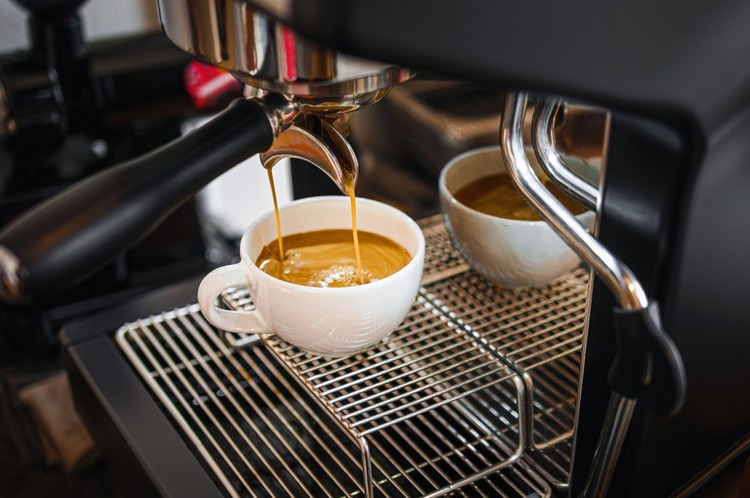Workflow setup for consistent cup-to-cup results
A practical workflow helps baristas reproduce consistent latte art and cup quality. This teaser outlines the core areas to standardize—grind, extraction, steaming, milk handling, and pouring technique—so training and daily routines deliver repeatable microfoam, crema, and milktexture across shifts.

A reliable workflow turns skill into repeatable results by combining equipment checks, standard settings, and focused practice. Start each shift with a quick calibration: confirm grindsize, dose and tamp consistency, and shot times for a stable espresso and crema. Follow a steaming checklist to achieve consistent microfoam and milktexture, then use a reproducible pouring routine for freepour patterns. Document key parameters and encourage short practice sessions so small adjustments become predictable. These steps reduce variation from cup to cup and make skill development measurable.
How does grindsize affect espresso and crema?
Grindsize is the foundation of extraction and directly influences crema quality. A finer grind increases resistance and can lengthen extraction time, often creating a richer crema if balanced correctly; a coarser grind shortens contact time and can yield thin crema. Calibrate grind settings to match dose, basket type, and espresso machine pressure so shot times stay within target ranges. Regularly check for channeling and adjust grindsize and distribution to maintain even extraction. Keeping a grind log during practice helps link changes in grindsize to crema appearance and flavor.
What steaming steps create stable microfoam?
Steaming technique and temperature control are central to producing microfoam with good foamquality. Begin with cold milk and a clean pitcher, purge the steam wand, then position the tip just below the surface to introduce air briefly before submerging to heat evenly. Monitor pitcher angle and depth to create a whirlpool that integrates air into smaller bubbles. Aim for a steaming temperature that preserves milk sweetness without scalding. Consistent steaming pressure and timing create repeatable microfoam, so measure watts or thermometer readings during practice and standardize the routine across operators.
How to shape milktexture for pouring and foamquality?
Milktexture determines how well microfoam flows during pouring and how it holds on the surface. Texture should be glossy and slightly viscous—neither too airy nor too dense. After steaming, knock and swirl the pitcher to remove large bubbles and to settle the microfoam. Observe how the milk sits on top of espresso: a thin layer of crema blending with microfoam is ideal for clear patterns. Adjust milk temperature, steaming length, and pitcher handling to refine milktexture. Regular sensory checks and side-by-side comparisons help operators learn the subtle differences that affect pouring behavior.
What freepour technique improves consistency?
Freepour requires consistent hand positioning, controlled pouring speed, and pattern sequencing. Start with a steady high pour to sink milk beneath the crema, then lower the pitcher and increase wrist motion for design formation. Focus on rhythm and a controlled start-stop approach for elements like hearts or rosettas. Use the same pitcher shape and spout profile across practice sessions to build muscle memory. Videoing practice pours can reveal inconsistencies in angle or flow rate. Repeated deliberate practice of the freepour technique reduces variance and helps translate microfoam quality into repeatable latte art.
How does pressure influence extraction and texture?
Pressure affects both espresso extraction and how crema supports milk during pouring. Consistent brew pressure helps extract sugars and oils that form crema, which in turn influences how the microfoam sits and spreads on the shot. Check machine pressure specifications and pressure gauges regularly, and train staff to recognize symptoms of pressure drift—overextraction tastes harsh, underextraction tastes sour. Pressure during steaming also matters; insufficient steam pressure yields weak aeration, while excessive pressure can make steaming harder to control. Documenting and monitoring pressure and related parameters improves predictability across shifts.
| Provider Name | Services Offered | Key Features/Benefits |
|---|---|---|
| Barista Hustle | Online barista courses and microfoam tutorials | Focused technique modules, video demonstrations, instructor-led materials |
| Specialty Coffee Association (SCA) | Coffee skills programs and certifications | Structured curricula, industry standards, in-person and online options |
| Udemy (various instructors) | On-demand latte art and steaming classes | Flexible pacing, beginner to intermediate lessons, community reviews |
| Local coffee schools / roaster training | Workshop-style in-person training | Hands-on practice, equipment access, immediate feedback |
Mentioned providers offer different formats from online lessons to hands-on workshops; evaluate which suits your workflow and practice needs. Prices, rates, or cost estimates mentioned in this article are based on the latest available information but may change over time. Independent research is advised before making financial decisions.
Real-world practice and routine for consistent results
Consistent cup-to-cup performance grows from brief, frequent practice and a shared workflow document. Use shift checklists that include grind, dose, extraction time, steam pressure, and a short steaming test. Encourage five-minute practice blocks focused on a single element—one day for grindsize adjustments, another for freepour rhythm. Log anomalies and corrective actions to build a living reference. Over time, this structured approach reduces variability, helps new staff onboard faster, and turns individual technique into a consistent team standard.
Consistent latte outcomes come from combining measured machine settings, reproducible steaming and pouring routines, and deliberate practice. Standardize checkpoints, record results, and prioritize short, focused training sessions so microfoam quality, crema behavior, and pouring technique align. A documented workflow makes adjustments transparent and helps teams deliver repeatable cup-to-cup results across shifts and locations.




